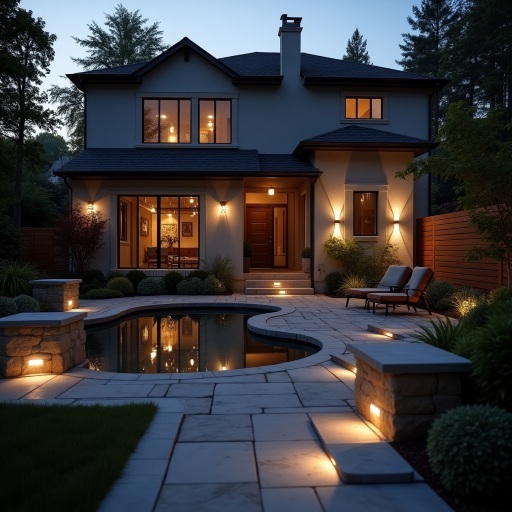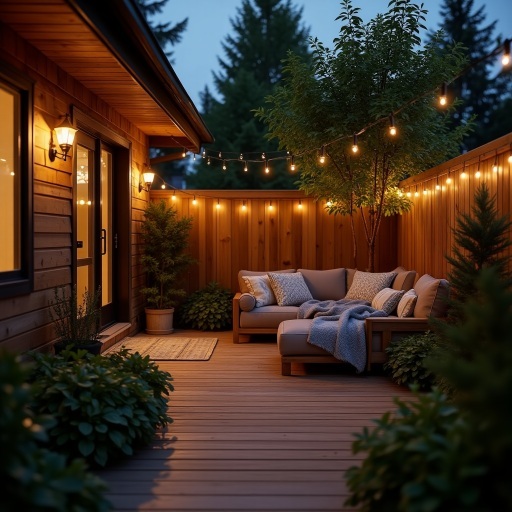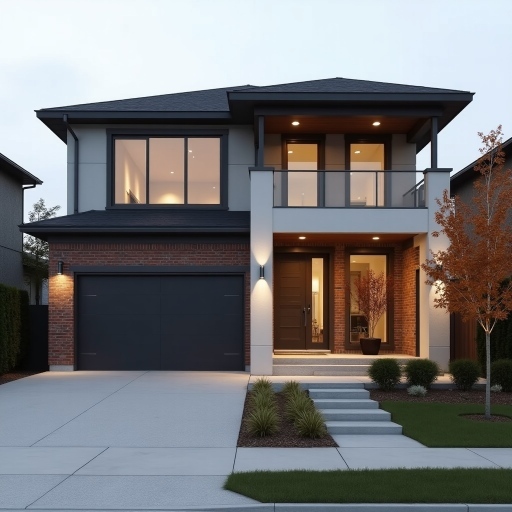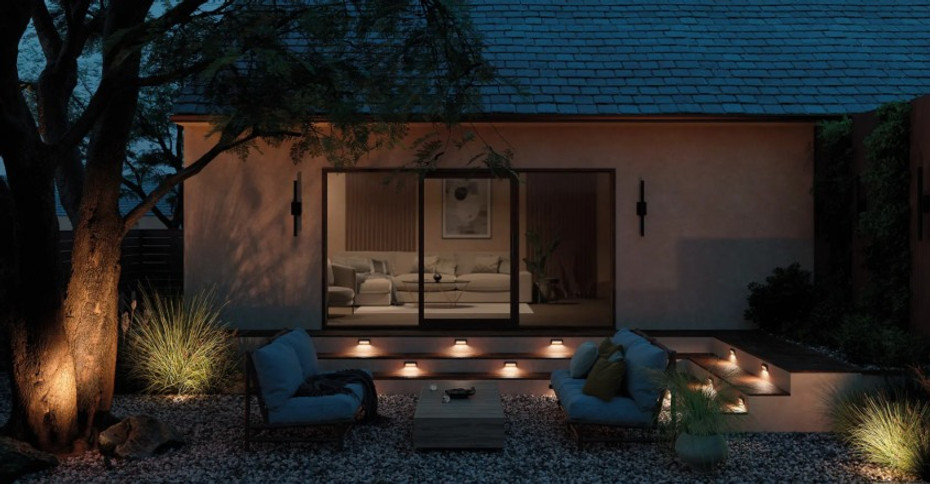Outdoor lighting transforms any home or commercial space from simply functional to beautifully illuminated. Whether you’re a homeowner looking for a DIY-friendly project or a professional landscaper seeking premium products, choosing stainless steel outdoor lights can deliver a high return on investment. In this article, we’ll explore the benefits of stainless steel fixtures, break down landscape lighting costs, and provide a step-by-step installation guide. We’ll also answer top FAQs to ensure your lighting project is stress-free and stunning—especially important in demanding climates like Canada.
Why Outdoor Lighting Matters
Outdoor lighting adds safety, beauty, and versatility to any property. Path lights guide visitors, spotlights accentuate architectural or landscape focal points, and wall-mount fixtures enhance curb appeal. Proper illumination can also extend your living space into the yard or patio, making outdoor gatherings more comfortable and visually appealing.
Key Benefits of Landscape Lighting
- Safety & Security: Illuminated walkways and perimeters deter intruders and reduce trip hazards.
- Enhanced Aesthetics: Highlight garden features, architectural elements, or water features.
- Increased Property Value: Professionally lit exteriors often command higher resale prices.
Stainless Steel: The Durable Choice
Stainless steel outdoor lights are rust-resistant, easy to maintain, and timeless in design. While they may cost more upfront than some other materials, stainless steel’s longevity pays off in the long run—especially in harsh Canadian winters where fixtures are exposed to snow, ice, and road salt. With minimal upkeep, these fixtures retain their polished look for years.
Ready to explore premium stainless steel options? Check out The Lighting Shoppe’s stainless steel product selection, including the popular Coast Stainless Steel Large Outdoor Wall Mount and the sleek Portal Stainless Steel Outdoor Wall Mount.
Key Cost Factors for Landscape Lighting
The cost to install landscape lighting depends on various factors like the number of fixtures, power source, labor, and the complexity of your design. According to estimates from industry resources (e.g., Lawn Love, Angi, Homewyse, and LawnStarter), here’s an overview of 2025 pricing in Canada (CAD) and the U.S. (USD) for a mid-sized residential project:
1. Number of Fixtures
- Basic Setup (4–6 lights): ~$900–$2,000 (CAD) / ~$750–$1,600 (USD)
- Mid-Range Setup (6–10 lights): ~$1,500–$3,500 (CAD) / ~$1,200–$2,800 (USD)
- Premium Setup (10+ lights): $3,000+ (CAD) / $2,400+ (USD)
2. Power Source
- Solar Lights: Typically cheaper upfront; limited brightness and reliability in low-sunlight areas.
- Low-Voltage (12V): A common sweet spot; energy-efficient, relatively easy to install, and safer than line voltage.
- Line Voltage (120V): Higher brightness potential but higher installation costs due to deeper trenching and code compliance.
3. Labor & Installation Complexity
- DIY Approach: You can save on labor, but you’ll invest time in planning, trenching for wires, and ensuring code compliance (for line-voltage setups).
- Professional Installation: Prices vary based on local rates and project complexity. Expect to pay more if you need extensive trenching or if you have large, intricately landscaped yards.
4. Fixture Material & Quality
- Budget-Friendly: Aluminum, plastic, or composite fixtures. Shorter lifespan and less rust resistance.
- Mid-Range: Powder-coated metals offer durability but may eventually rust or corrode.
- Premium Stainless Steel: Rust-resistant, extremely durable, and visually appealing—especially in climates with heavy precipitation or salt exposure.
For more outdoor lighting ideas and to compare product lines, visit The Lighting Shoppe’s Outdoor Lighting section or the dedicated Landscape Lighting page.
Landscape Lighting Installation Guide
A well-planned installation ensures long-lasting performance and minimal maintenance. Below is a landscape lighting installation guide that applies broadly to low-voltage and some line-voltage systems.
1. Plan Your Layout
- Identify Focal Points: Decide what you want to highlight (a pathway, a pond, a beautiful tree, or architectural features).
- Consider Ambient Lighting: Think about soft illumination for seating areas or backyard patios.
- Map Power Sources: If you’re using low-voltage lighting, determine where you’ll place the transformer.
2. Gather Tools & Materials
- Fixtures & Bulbs: Stainless steel fixtures for longevity.
- Transformer: Choose a transformer with adequate wattage capacity for all fixtures (plus extra for any future expansions).
- Wire & Connectors: Low-voltage cables typically come in 12–14 gauge. Match wire gauge to the wattage and run length (more details in the FAQs).
- Trenching Equipment: A trenching shovel or a half-moon edger.
3. Prep the Wiring
- Measure Wire Runs: Factor in the distance from the transformer to each fixture.
- Avoid Overloading One Run: Distribute fixtures across multiple runs if necessary.
- Use Weatherproof Connectors: Ensure connections are watertight.
4. Burying the Cables
- Depth Guidelines: For low-voltage lines, 6 inches is often sufficient; for line-voltage wiring, local codes may require 12–18 inches.
- Lay Conduit (if required): Especially important for line voltage or if you’re in an area prone to digging or rodent damage.
5. Install Fixtures
- Space Fixtures Evenly: Overlapping beams can create hot spots.
- Angle Adjustments: Use adjustable spotlights to direct beams precisely.
- Test Before You Fill Trenches: Connect everything temporarily and ensure all lights function correctly.
6. Final Testing & Adjustments
- Check Timers & Photocells: Automatically turn lights on at dusk and off at dawn, or set timers to your preference.
- Look for Glare: Ensure fixtures are angled so they don’t create direct glare for guests or neighbors.
- Cover Trenches & Secure Cables: Once you’re confident the system works, fill in the trenches and secure cables to prevent movement.
DIY vs. Hiring a Pro
DIY Approach
- Pros: Saves on labor costs, gives you complete control over design choices, great for smaller projects.
- Cons: Requires time, effort, and basic electrical know-how (even low-voltage projects need careful planning).
Professional Installation
- Pros: Ensures code compliance, expert design advice, often includes warranties on labor.
- Cons: Higher upfront cost, scheduling around a contractor’s availability.
Design Inspirations & Trends
It’s not just about brightening your pathways or walls; it’s about creating a cohesive aesthetic. Here are outdoor lighting ideas that balance functionality and style:
Layering Light

Combine path lights, wall sconces, and spotlights for a multidimensional glow. Consider a central focal point, like a water feature, lit from multiple angles.
Modern Minimalism

Focus on clean lines and neutral fixtures. Stainless steel complements modern architecture and contemporary landscapes.
Warm & Inviting

Use LED bulbs in warm color temperatures (2,700K–3,000K) for a cozy glow. Place fixtures at the base of small ornamental trees to create soft uplighting.
Accent Colors & Smart Controls

Some LED systems allow for color changes via a smartphone app, ideal for seasonal decor or events. Smart controls let you adjust lighting schemes without leaving the couch.
For more inspiration, explore The Lighting Shoppe’s ideas & inspiration blog or our guide on integrated LEDs vs. replaceable light bulbs.
Frequently Asked Questions
1. What is the average cost to install landscape lighting?
Costs can range from around $900 to $5,000 (CAD), depending on the number of fixtures, labor rates, and the complexity of your design. Small-scale DIY projects can be under $1,000 (CAD), while larger, professionally installed systems often exceed $3,000 (CAD).
2. Why is landscape lighting so expensive? Are expensive landscape lights worth it?
High-quality materials like stainless steel and LED components drive up costs but also offer superior durability and performance. Cheaper fixtures may save money upfront but often require more frequent replacement due to rust or component failure.
3. How long does it take to install landscape lighting?
A small DIY project can be done in a weekend, while professional installations for larger properties may take one to three days, depending on trenching and wiring complexity.
4. How deep does landscape lighting need to be buried?
Low-Voltage Cables: Usually 6 inches is sufficient. Line-Voltage Cables: Can require 12–18 inches or more, depending on local building codes.
5. What is the 3-point lighting rule or the ‘rule of 3 lights’?
Originally a photography and cinematography concept, the 3-point lighting rule can also apply to landscape design—using key light, fill light, and back light (or background accent) to create depth, highlight focal points, and eliminate shadows.
6. How do you choose the right outdoor lighting?
Start by identifying the purpose (safety, aesthetics, or both) and the area you want to illuminate. Factor in fixture style, material quality, desired brightness (lumens), and local climate. Stainless steel fixtures are excellent for high moisture or corrosive environments.
7. Are LED landscape lights worth it?
Absolutely. LED bulbs use significantly less energy, have longer lifespans, and are increasingly affordable. Over time, energy savings and reduced maintenance more than justify the initial cost. Check out our article on how to brighten your home in 2025 for more insights.
8. Can you overdo landscape lighting?
Yes. Too many fixtures or excessive brightness can create glare and look unnatural. Aim for balance and focus on accentuating key areas rather than over-illuminating everything.
9. How many lumens should landscape lights be?
It depends on the application:
- Path Lights: 100–200 lumens each.
- Spotlights: 300–500 lumens each for trees or architectural elements.
- Wall Sconces: 200–400 lumens per fixture, depending on spacing and desired brightness.
10. How many outdoor lights can you run off of one transformer?
This depends on the transformer’s wattage. Calculate the total wattage or volt-amperes (VA) of your fixtures. Ensure the transformer’s capacity exceeds that total by at least 10–20% to accommodate any future additions.
11. What is the maximum run length for outdoor lights?
Low-voltage runs can range up to 100–200 feet per cable, but voltage drop becomes a concern. Using heavier-gauge wire (12-gauge) helps mitigate this. Always check manufacturer guidelines.
12. What gauge of wire should be used on outdoor lights?
Most low-voltage landscape lighting projects use 12- or 14-gauge wire. Heavier gauge (12-gauge) helps reduce voltage drop on longer runs or with higher-wattage systems.
Case Studies & Success Stories
- Urban Patio Upgrade: A homeowner in Toronto added six stainless steel path lights and two wall sconces around a small backyard patio. Their total cost was ~$1,600 (CAD), with the homeowner doing most of the installation. They praised the rust-resistance and sleek design of stainless steel fixtures through two Canadian winters.
- Suburban Oasis: A professional landscaper in Vancouver installed 12 low-voltage stainless steel fixtures to illuminate a terraced garden and water feature. Though the project cost over $4,000 (CAD) due to trenching and additional transformer capacity, the result was an upscale, resort-like feel that boosted the property’s value.
Conclusion & Call to Action
Stainless steel outdoor lights are a wise investment for homeowners and professionals seeking durability, style, and long-term value—especially in climates with harsh winters. With landscape lighting installation costs varying based on factors like fixture count and power source, it’s crucial to plan well, select quality materials, and follow best practices. Whether you go the DIY route or hire an expert, a thoughtfully lit outdoor space can transform your home’s exterior into a welcoming, secure oasis.
Ready to start planning or need expert advice?
- Browse Our Premium Stainless Steel Lighting:
- Explore Our Full Outdoor Lighting Collection:
- Contact Us for design tips or a free consultation to ensure you choose the perfect fixtures for your space.
With stainless steel fixtures from The Lighting Shoppe, you’ll enjoy a polished, durable, and energy-efficient lighting solution that meets the needs of both novice DIYers and seasoned pros.
 Canadian Dollars
Canadian Dollars
 US Dollar
US Dollar



